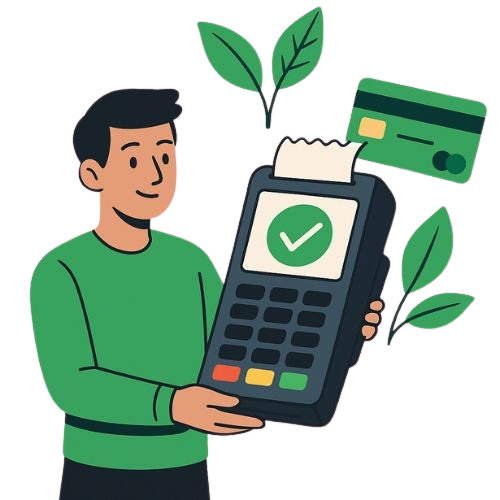Eco‑Friendly Payment Solutions for High‑Risk Merchants

Processing transactions in high‑risk sectors—such as CBD retail, online gaming, and travel bookings—means juggling compliance, fraud prevention, and chargeback controls. Environmental impact often goes unaddressed. Cutting carbon emissions from data centers, slashing paper waste, and offering green checkout options can reduce your footprint and appeal to eco‑aware shoppers.
Why Sustainable Payments Matter for High‑Risk Businesses
Reducing Carbon Footprint in Transactions
Every swipe or click relies on server farms, cooling systems, and network hardware. When payment platforms run on fossil fuels, each transaction adds to global emissions. Opt for gateways that power data centers with solar, wind, or hydroelectric energy. Some providers publish annual sustainability reports so you can track emission savings over time.
Meeting Evolving Customer Expectations
Shoppers increasingly weigh a brand’s green credentials before buying. A recent industry poll found 62% of consumers would switch to merchants offering paperless receipts and carbon offset options. Highlighting eco‑friendly payment features can boost loyalty and word‑of‑mouth in competitive high‑risk markets.
Key Strategies for Greener Payment Processing
Paperless Invoicing and E‑Receipts
Eliminating printed invoices and receipts saves trees and postage. Most platforms let you send e‑receipts via email or SMS with a few clicks. Customize messages to reinforce your sustainability stance and link to your environmental policy.
Biodegradable Payment Cards
Some providers issue cards made from compostable materials instead of PVC. These cards decompose naturally when discarded. For merchants offering physical cards—like membership or loyalty cards—this switch cuts plastic waste dramatically.
Renewable Energy‑Powered Data Centers
Not all hosting partners operate the same way. Look for data centers certified under ISO 14001 or those in the Green Grid consortium. Processing transactions through these facilities means each payment draws from renewable sources without performance trade‑offs.
Carbon Offsetting Programs
Certain gateways allocate a share of transaction fees toward verified offset projects—reforestation, clean water initiatives, or renewable energy installations. Offer customers the choice to add a micro‑donation at checkout. Over months, these small contributions fund meaningful environmental work.
Measuring Your Green Impact
Tracking Emissions and Savings
Use online carbon calculators to estimate emissions per transaction. Set quarterly reduction targets and review them alongside sales metrics. Some eco‑focused providers include built‑in dashboards for real‑time reporting.
Reporting to Stakeholders
Share sustainability achievements in quarterly newsletters or on your website. A transparent report on trees saved or carbon offset helps build trust and can attract green‑minded investors or partners.
Case Study: Green Payments in Action
GreenLeaf Gaming, a high‑risk online casino, integrated e‑receipts and an optional carbon offset at checkout. Within six months, paper waste dropped by 85% and customer retention rose by 12%. Their sustainability report highlighted 2,000 trees saved and offset emissions equivalent to 50,000 miles of driving—figures that resonated in press releases and social channels.
Choosing the Right Payment Partner
Evaluating Eco‑Friendly Gateways
Review potential providers’ websites for clear sustainability commitments. Do they publish carbon reports? Are data center partners verified green? Seek third‑party certifications or memberships in environmental alliances.
Comparing Payment Processing Companies
Beyond fees and technical features, weigh each provider’s green policies. A detailed list of vetted options can help you match compliance for high‑risk merchants with genuine environmental action.
Implementing Green Payment Practices
Integrating with Existing Checkout Flows
Most e‑commerce platforms support plugin‑based payment modules. After selecting a green gateway, install its plugin or API. Test on a staging environment to confirm e‑receipt formatting, offset options, and fallback processes before going live.
Training Teams and Communicating with Customers
Educate sales and support staff about new payment features and why they matter. Update your website’s FAQ and checkout pages with clear messaging—highlight e‑receipts, biodegradable cards, and carbon offset choices. Consider badges or icons at checkout to reinforce your commitment.
Long‑Term Benefits of Green Payments
Cost Savings and Competitive Edge
Reducing paper and postage expenses lowers overhead. Optional carbon contributions, if passed to customers, have minimal impact on conversion rates. Demonstrating environmental leadership differentiates your brand in crowded high‑risk markets.
Future‑Proofing Against Regulations
Regulators worldwide are tightening rules on data center emissions and single‑use plastics. Early adoption of green payment options positions you ahead of compliance deadlines, reducing the risk of sudden policy changes or fines.
Conclusion
Moving toward eco‑friendly payment solutions tackles both environmental responsibility and customer demand. From choosing data centers powered by renewables to offering paperless receipts, biodegradable cards, and carbon offset contributions, every step builds a greener checkout. To set up a high‑risk merchant account with sustainability in mind, explore our guide on high‑risk payment strategies. Ready to partner with a provider that shares your values? Visit WebPays for more details.